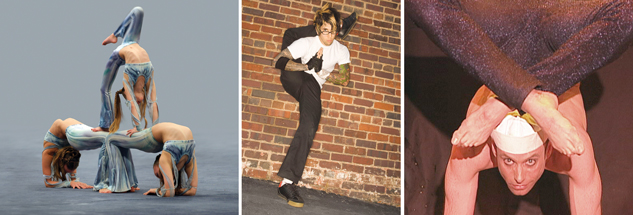Module 6 Intro
1. Module 6 Intro
1.11. Page 2
Module 6—The Motor System and Homeostasis
 Explore
Explore

© MaleWitch/shutterstock
Complications of the Muscular System
The most common muscle complication most people experience is muscle strain. Other common muscle complications are summarized in “Table 10.2” on page 345 of the textbook. As you read through pages 344 and 345 of the textbook, keep the words atrophy and hypertrophy in mind.
atrophy: a reduction in size, tone, and power of a muscle
hypertrophy: an exercised induced increase in muscle mass
 Self-Check
Self-Check
SC 1. How do muscles atrophy?
SC 2. True or false: Muscles increase in size due to an increase in the number of skeletal muscle fibres.
SC 3. Name a field of work that involves treating muscle atrophy.
 Self-Check Answers
Self-Check Answers
SC 1. Muscles atrophy if they experience a reduced stimulation of the fibres.
SC 2. False: Muscles increase in size due to an increase in the size of individual muscle fibres.
SC 3. Physical therapy involves treating muscle atrophy.
 Try This
Try This
TR 1. Injuries Related to Athletics
OUCH! Despite an athlete’s best efforts at prevention, muscle-related sports injuries are almost inevitable, especially among those individuals who push their bodies to the extreme. Sports-related injuries account for almost 20% of emergency-room visits among children and young adults each year in Canada. The following is published on the Alberta Centre for Active Living website and summarizes the statistics surrounding sports-related injuries in Alberta.

left: © Galina Barskaya/shutterstock
centre: © 2008 Jupiterimages Corporation
right: © Photo courtesy Mark Cyr
The 1996 Alberta Sport and Recreation Injury Survey is a retrospective study describing the annual incidence of injuries in the province of Alberta resulting from sport and recreational involvement. Data was collected by means of a telephone survey using random digit dialing techniques to obtain a representative sample of Albertans in the winter of 1995-96. The sample produced a total of 3790 respondents from 1478 households evenly split between genders, with an age range of 6 to 93 years.
The survey asked information regarding medically attended, non-fatal injuries resulting from sport and recreational activities. Results show that 83% of Albertans participated in at least one sport or recreational activity in the 12-month period prior to the survey. Males (84.4%) reported higher participation rates than females (81.8%). Findings reveal an annual incidence of sport or recreational injuries of 10.8%.
Based upon this rate, it is estimated that 246,888 sport or recreational injuries were experienced in 12 months prior to the study (95% Confidence Intervals 224,028 - 269,748). Among those reporting a sport or recreational injury, the most common types of injuries were a sprained/torn ligament (31.2%), strained/pulled muscle (18.8%), and fracture (13.4%). The most common bodily locations of injuries were the knees (20.9%) and the ankles (14.4%).
Mummery, W. K., Spence, J. C., Voaklander, D., & Vincenten, J. (1998). A descriptive epidemiology of sport and recreation injuries in a population-based sample: results from the Alberta Sport and Recreation InjurySurvey (ASRIS). Canadian Journal of Public Health, 89, 53-56.
Clearly, athletic injuries are a part of the reality of exercise and activity, whether of a moderate or extreme nature. In this next activity you will choose an athletic-related injury. This may be an injury you have experienced. You will research the injury, injury prevention, and treatment. You will present your research in a suitable format. You can find further instructions for this activity in your Module 6: Lesson 2 Assignment.